See a baby snake that looks like worms? Snakes have some standard features with several worms; various baby snakes resemble the worms in their initial weeks. So yeah, you got it right. Some snakes look exactly a worms.
Most newly born snakes look precisely like adults depending on the species; the only difference is the size.
However, a few species have their babies appear to be like worms but have quite some characteristics that help distinguish between them.
Let’s see the baby snakes that look like worms.
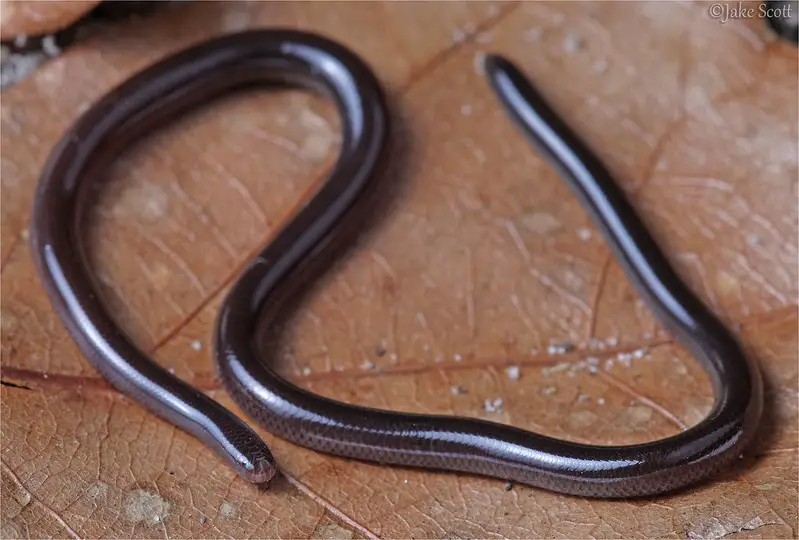
This article has been reviewed by Dr. Gospel. Read more about our knowledge control process here.
Contents
Which Baby Snakes Look Like Worms?
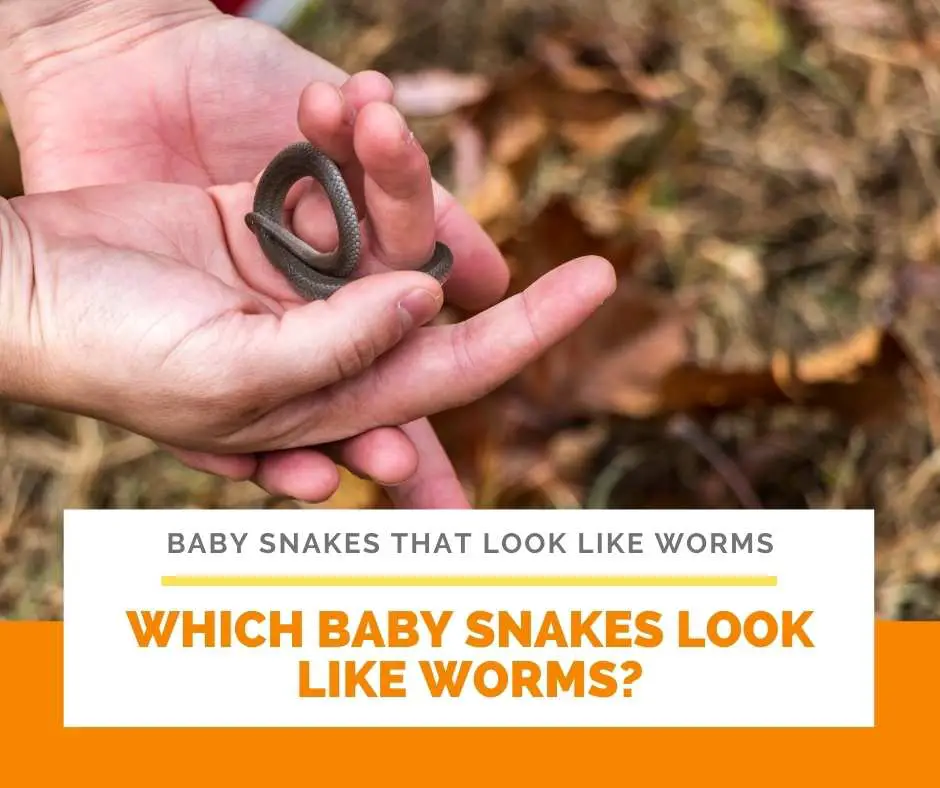
There are some snakes, such as blind snakes and Barbados snakes, and a few snakes that look really like worms at the baby stage, such as baby cottonmouth snakes, baby copperhead snakes, and baby rattlesnakes at the hatching stage (1-15 days old).
Adult Snakes That Look Like Worms
It may sound impossible to confuse an adult snake with a worm, but with Brahminy blind snakes, the story is different.
Usually, these snakes will make us think they are worms because of their appearance. The blind snake is the smallest snake species in the world, with adults measuring 2-4 inches in length.
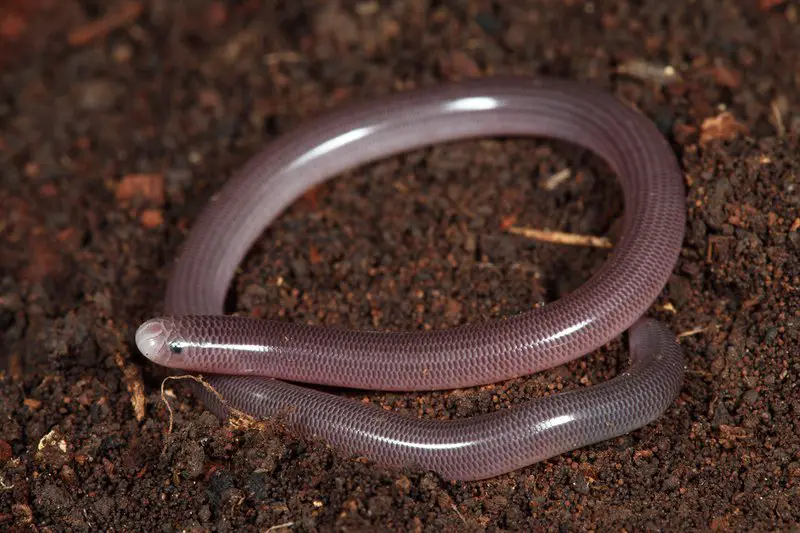
Like earthworms, blind snakes are completely burrowers. Their head and tail are the same, while the neck and head are unclear. The scales are utterly similar from the head to the rear.
As the name suggests, the snakes are partially blind because of a semi-transparent layer covering their small eyes.
Their bodies vary in color, ranging from purplish, silver grey, yellow-beige, charcoal grey, or rarely albino, with the underside more light-colored. These snakes exist in Africa, Asia, Oceania, North and South America, and Australia. Blind snakes are non-venomous.
Cottonmouth’s Baby Snake
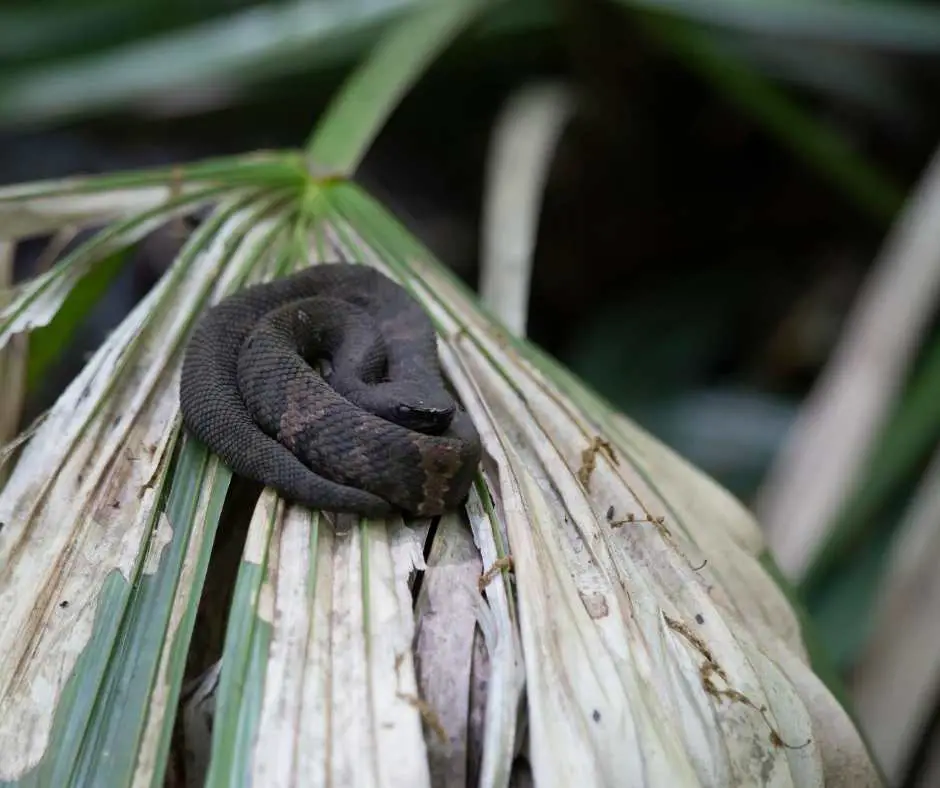
You may encounter a baby Cottonmouth and confuse it with a worm. However, certain features help you be confident that it is a snake and not a worm.
The Northern baby cottonmouth is born alive, and their tail appears to be bright yellowish to yellowish-green, unlike worms if you observe them strictly. The tail’s color helps them attract their prey, such as frogs, lizards, and other small animals that are potential food for them.
As the snake grows, the yellowish color on the tail will disappear, and it becomes black, just like the adults. Some adults have a uniformly black color, but the typical coloration is yellowish olive to black, with nearly thirteen black crossbands.
Baby Copperhead Snake
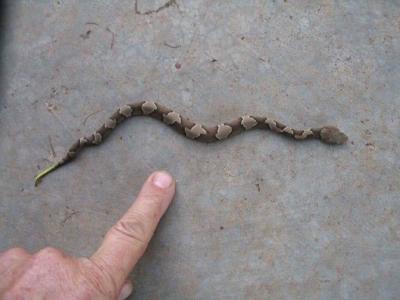
The baby copperhead snake seems different from their parents, and they look like worms in appearance. Though, when you observe the babies strictly, you can distinguish them by watching a few features.
The babies frequently have a bright yellow color on their tail tip, but it’s not always the case. The head is copper or reddish and often, but not always, has two black markings on top of the head.
The baby copperhead snake pretends to be a worm to the small prey by jiggling its bright yellowtail. This is how they catch their prey. Just like in Cottonmouth babies, the yellowtail in copperheads fades as they grow, and they attain the color normal to adults.
Baby Rattlesnakes
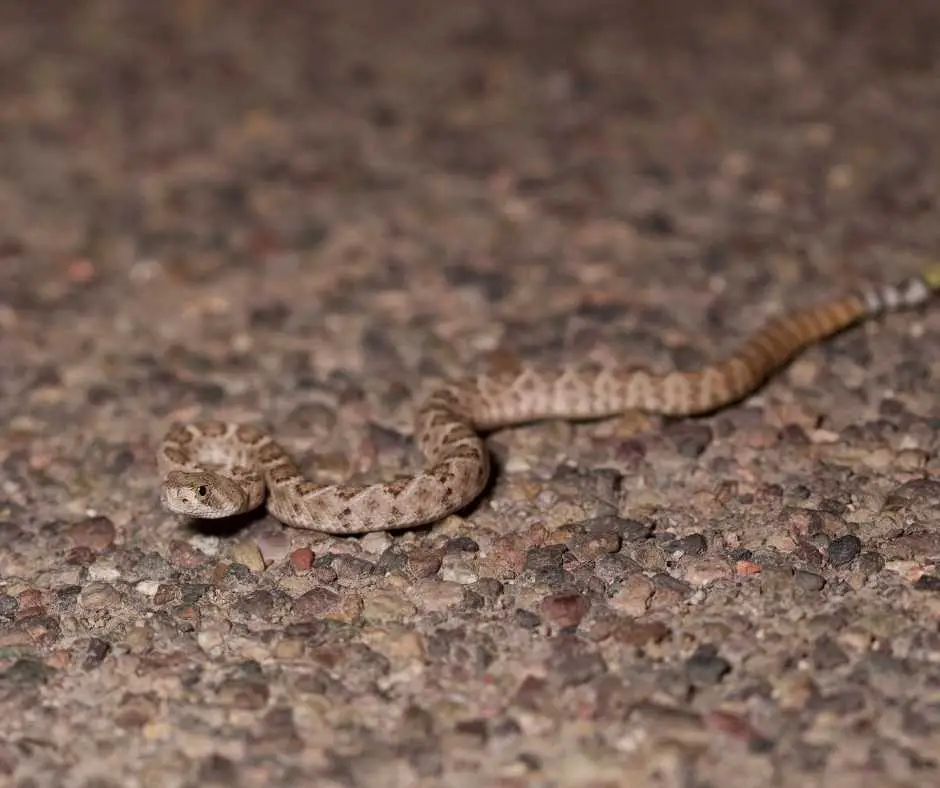
Baby rattlesnake has some features that make them look different from the adults. It is indeed true that the baby rattlesnake has the same appearance as the worms.
However, if you look at them closely, you will see a triangular head, and they have a small knob at the tip of their tail. Newly born rattlesnake lacks the rattles. The knob begins the rattle’s development after the baby begins to shed its skin.
The babies measure around 6-12 inches long. They have dark markings on their body, but the patterns may be unclear until you observe them keenly and closely.
The babies use venom to paralyze the prey during hunting. Another baby snake that looks like worm is the Brahminy blind snake.
Earthworms share some features with snakes in that they can be brown or gray in color, have long bodies, and may show unusual head and tail tips. It explains why it is possible to confuse worms with snake babies.
Other characteristics that distinguish baby snakes and worms are scales, a segmented body, eyes, and mouth. Knowing how to identify baby snakes from the worms is super important.
What to Do if You Find a Baby Snake in Your Home?
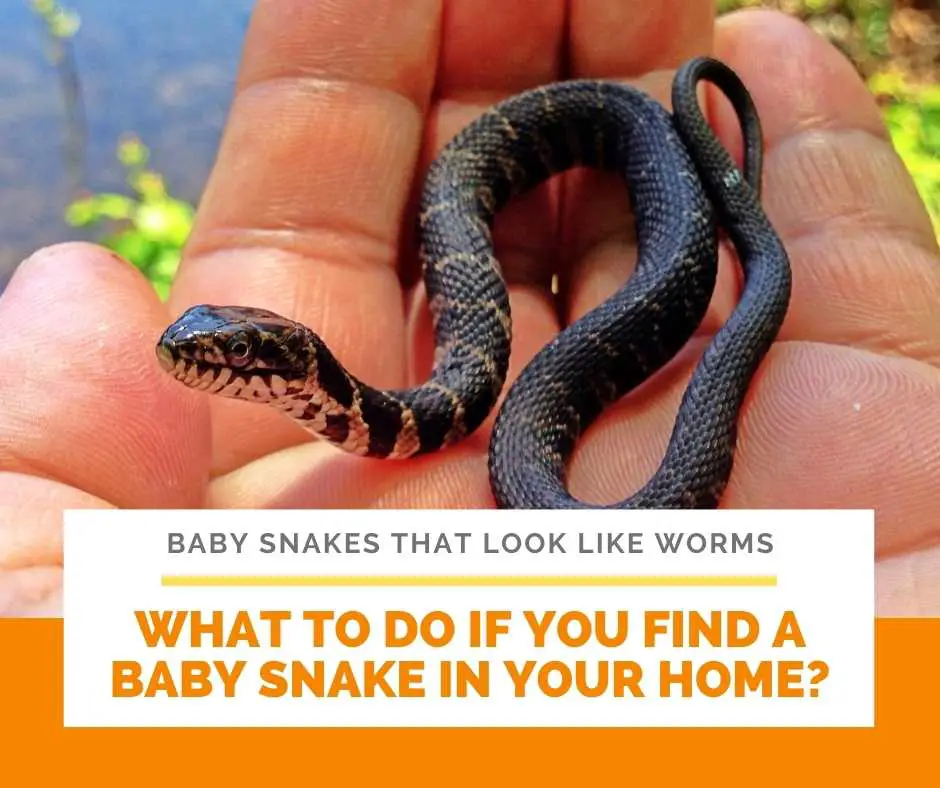
Whether hatched or born lively, most snake babies do not stay with their mothers. They have to look for food and shelter on their own.
Because of their small size, baby snakes are vulnerable to predators or may even die due to harsh environmental conditions. To escape from anything that may expose them to danger, these snakes can hide in the house, with available gaps and cracks, among others.
Baby snakes are not as docile as they may seem. They are excellent at defending themselves from any disturbances.
If you find a baby snake in your homestead, there is no need to worry. Make sure to leave it alone, and don’t frighten them in any way. They will not hurt you if you don’t get along their way.
There are safe ways to remove the snake from your home if you can’t keep them, or you can ask for help from an expert. Baby snakes are only aggressive when you try to startle them.
Do Baby Snakes Bite?
Only a few snakes will care for their newly born babies. The majority of baby snakes are born independent.
They will go out to hunt small animals that are potential food for them. The venomous species give rise to their young ones with a real venom-producing gland on the roof of the mouth. They can generate the poison from early life, and babies tend to be more aggressive than adults.
Due to such behavior, babies can quickly bite someone when they need to defend themselves. They have a small body and may sometimes be invisible to humans.
However, the babies have a low volume of venom to inject in case of a bite. An excellent example of this kind of species is the rattlesnake. However, being more aggressive, like adults, does not make them more hazardous. The adults produce plentiful venom.
Additionally, venom is still venom, no matter the volume. It does not mean that baby snakes are safe because of less poison.
For instance, venom from the Eastern brown snake’s babies can kill someone. Also, it is good to note that snakes will use more toxins for hunting prey than they can inject in case of a bite in defense.
Conclusion
Baby snakes are interesting creatures to learn about. They emerge from the hatched eggs or are born alive.
The baby snakes do not always look like their adult counterparts and may differ in several ways.
Some baby snakes even happen to look like worms. The article explains the baby snakes that look like worms from different snake species and how to differentiate one from the other. I hope you find it helpful.
We found a baby snake that was tan/beige in color approx 2 in long. I think it is a blind snake.
I want to do this because I love snakes
Help! For the last few nights when I go into bedroom for the night (room had been dark), turn on zhe light and there is a funny looking “worm”, so I thought, on the tile floor just motionless. I pick him up with a tissue and boy does he come alive making all the motions, positions as a snake. Picture above is spitting image!
What to do??? I have put him outside on lanai (I do that with all creepy crawlers I find in house)
I can’t figure out where there are all coming from. Last night I found 2 at a time. Bug exterminator??
Please advise!
That might be season changing in your area and animals try to find a *dry place*
I find them on the kitchen floor in the evening whenever I come in from working in the yard. They must hitch a ride on my clothes. They flop around on the floor like you say, but when they get on the carpet they slither and you can’t catch them!
I just found what I thought was a black worm on our bathroom floor. But when I tried to pick it up, it wiggled just like a snake. I had a really hard time catching the little guy, but finally succeeded. After showing him to husband and son, I put him out in our back yard under a tree. Hopefully, he will grow big and begin to catch nasty rodents.
I have never seen such a tiny snake! He looks just like the one in the video above.